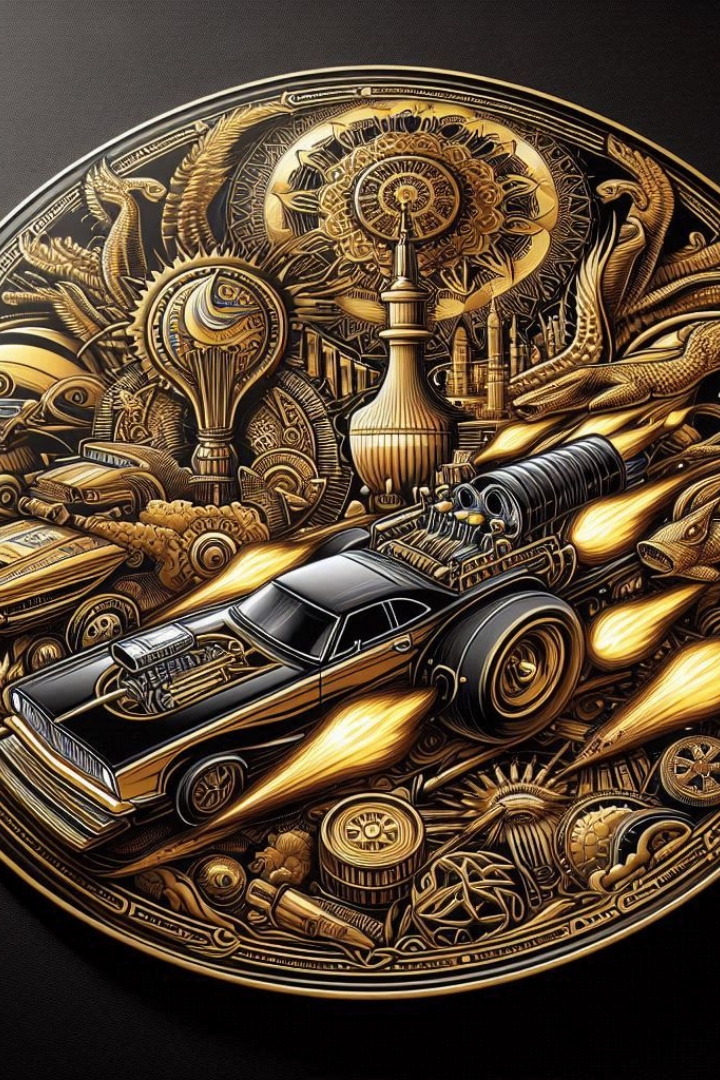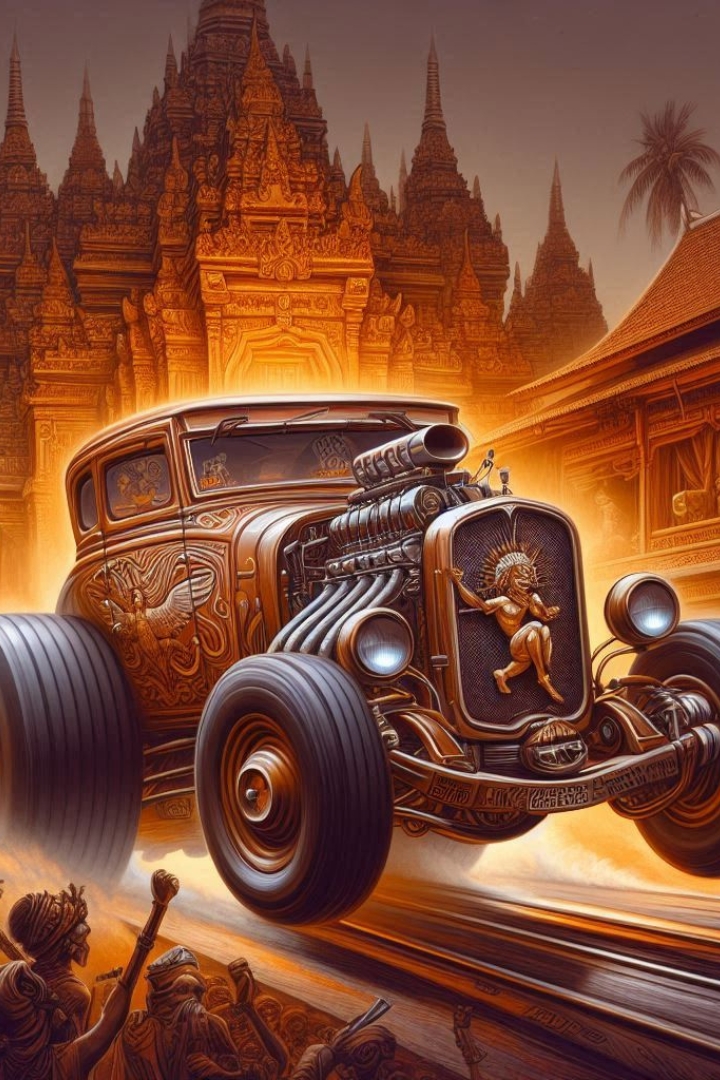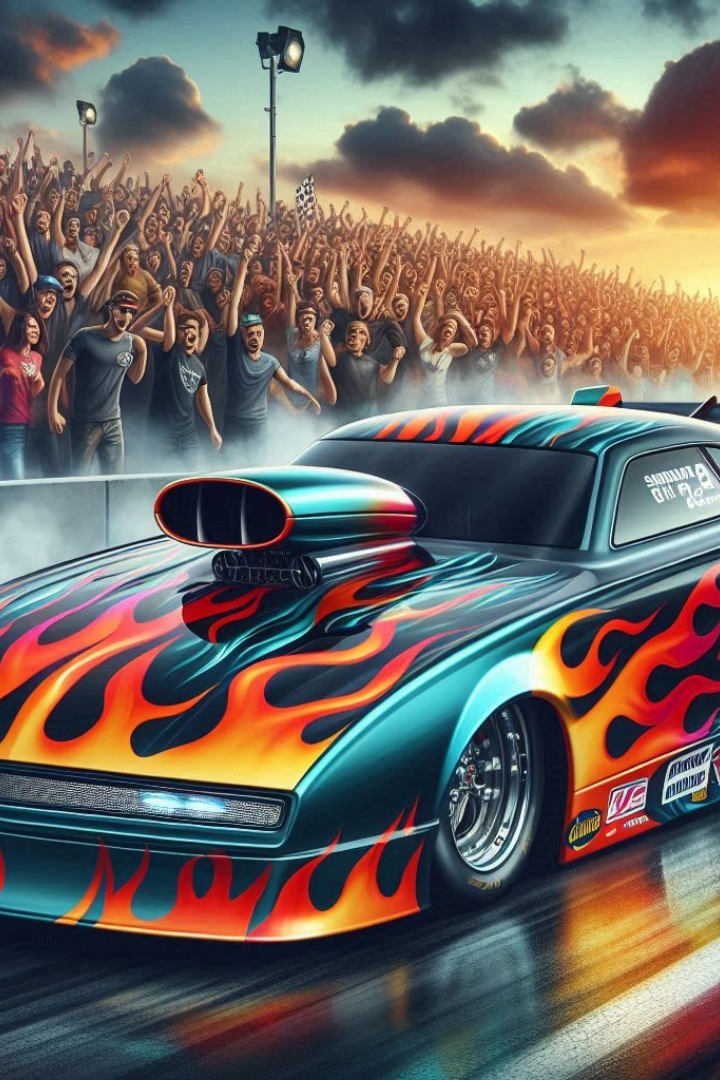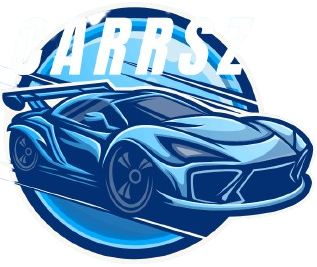The Best Drag Racing Thrilling World of Drag Racing Cars 29
Table of Contents
- The Best Drag Racing Thrilling World of Drag Racing Cars 29
- Table of Contents
- The Basics of Drag Racing Cars
- Categories of Drag Racing Cars
- The Way of life of Running
- The Predetermination of Hustling Vehicles
- Motor Progression and Execution
- Transmission and Drivetrain
- Optimal arrangement and Downforce
- Safety Features
- State of the art advancements and Improvements
- The Evolution of Drag Racing Cars
- Start to finish Assessment of Hustling Vehicles
- Engine Components and Execution
- Chassis and Suspension Engineering
- Smoothed out highlights and Downforce
- Table of Contents
Dashing, with its unrefined speed and outrageous challenge, has stunned vehicle fans for a seriously significant time-frame. This very charged sport twirls around straight-line speed, with vehicles running down a quarter-mile strip in a rivalry to be the fastest. The center of hustling lies in the vehicles that make this scene possible, each a miracle of planning and execution.
The Basics of Drag Racing Cars
At its middle, a hustling vehicle is planned for one explanation: to achieve most prominent speed increment over a short distance. Not by any stretch like various sorts of dapper that highlight diligence and dealing with, hustling bases solely on speed and unsafe power. The vehicles are outfitted areas of strength for with, lightweight bodies, and undeniable level smoothed out elements to achieve the speediest times possible.
**1. Engines and Power:
Hustling vehicles consistently feature significantly modified engines, often marvellous 1,000 draw in high level classes. These engines can be either typically suctioned or turbocharged, with nitrous oxide or superchargers routinely used to help power. In top hustling classes, for instance, Top Fuel and Engaging Vehicle, engines are explicit and painstakingly tuned to manage absurd conditions and convey extraordinary execution.
**2. Lightweight Turn of events:
To expand speed increment, hustling vehicles are worked with lightweight materials like carbon fiber, aluminum, and titanium. The goal is to lessen weight whatever amount as could sensibly be anticipated without compromising prosperity. For example, the case and body are much of the time attempted to be basically essentially as light as could be anticipated, while staying aware of the fundamental trustworthiness expected to manage the tremendous powers experienced during a run.
**3. Smoothed out highlights:
Ideal plan expect a basic part in hustling. While the vehicles will not need to manage corners, they ought to overcome enormous smoothed out drag. Consequently, hustling vehicles incorporate streamlined designs and focused smoothed out parts like front spoilers, back wings, and diffusers. These parts help with administering wind stream and augmentation downforce, which is huge for staying aware of balance at high speeds.
**4. Tires and Suspension:
The tires on a dashing vehicle are planned to give most outrageous hold, allowing the vehicle to accelerate rapidly off the line. These tires are a large part of the time colossal and uncommonly created with heightens that offer a congruity among balance and strength. The suspension system, while to some degree clear appeared differently in relation to road hustling vehicles, is tuned to manage the gigantic powers of ship off and ensure the wheels stay emphatically settled on the track.

Categories of Drag Racing Cars
Running elements a gathering of vehicle classes, each with its own strategy of rules and execution focal points. Logical the most extraordinary orders include:
**1. Top Fuel Speedsters:
Top Fuel Speedsters are the heads of running, with motors making more than 11,000 drive. These vehicles are worked for over the top speed and can finish the quarter-mile in under 3.7 seconds, appearing at speeds more than 330 mph. Their sheer power and speed increase make them a fan #1 and a component of running occasions.
**2. Interesting Vehicles:
Engaging Vehicles look like Top Fuel Speedsters concerning power at any rate contrast in plan. They consolidate a more standard vehicle body, but with an uncommonly changed appearance for streamlined reasonability. Captivating Vehicles are known for their stunning wheelstands and crucial shows, making them a staple of running.
**3. Star Stock Vehicles:
Expert Stock Vehicles appear to be creation vehicles more anxiously than Top Fuel and Captivating Vehicles, yet they are still excitedly adjusted to execution. These vehicles stress a general effect and managing, with motors usually making around 1,500 draw. Expert Stock hustling is known for its nearby conflict and specific refinement.
**4. Contender Classes:
Contender running coordinates a degree of classes that offer a more open fragment point for beginner racers. These vehicles are generally not such a ton solid areas for of rather more enthusiastically appear to be road vehicles, yet they are still especially tuned for running. Orders like Ceaselessly stock eliminator give open approaches to a considerable number of racers to take an interest.
The Way of life of Running
Running isn’t just about the vehicles; it’s likewise about the way of life and neighborhood the game. The energy of watching a vehicle rocket down the strip, the thunder of the motors, and the collaboration among fans and racers make a groundbreaking and lively climate. Occasions are a huge piece of the time family-obliging, with exercises and attractions that celebrate vehicle culture.
Likewise, the game has a rich history, with legends and popular minutes that have shaped its new development. From the very beginning of running with privately assembled vehicles and loosened up occasions to the exceptionally advanced, proficient circuits of today, hustling has made while remaining mindful of its center substance of speed and adrenaline.
The Predetermination of Hustling Vehicles
As progression keeps on moving, hustling vehicles are apparently going to see further new developments. Electric running, for instance, is starting to cause aggravations with vehicles like the Rimac Nevera and the Tesla Model S Plaid showing remarkable speed increase limits. The game is advancing, yet its center appeal — unadulterated speed and the energy of conflict — stays unaltered.
The Intricacies of Drag Racing Cars
Hustling vehicles are wonders of arranging and configuration, meticulously made to accomplish max movement in a high-stakes run. Their new development, headway, and tuning processes incorporate the exceptional moves made to guarantee these vehicles can deal with the gigantic tensions and convey invigorating rate. Might we at any point bounce further into the intricacies and upgrades that portray these inconceivable machines.
Motor Progression and Execution
**1. Motor Plans:
Hustling motors come in different plans, yet the most by and large saw are V8s and inline motors. Top Fuel Speedsters, for instance, use supercharged, nitromethane-filled V8 motors fit for conveying in excess of 11,000 draw. These motors are anticipated most noticeable power yield and are a huge piece of the time the deferred result of broad inventive work.
**2. Supercharging and Nitromethane:
In many hustling classes, supercharging and nitromethane fuel anticipate imperative parts. Superchargers, similar to the Roots-type blowers utilized in Top Fuel and Drawing in Vehicles, force more air into the motor, trusting more fuel to be singed and subsequently broadening power. Nitromethane is a remarkably ignitable fuel that, when blended in with air, makes more power than gas. At any rate, it likewise requests strong motor parts considering the uncommon tensions and temperatures it makes.
**3. Cooling Frameworks:
The cooling frameworks in hustling vehicles are wanted to oversee fantastic circumstances. Drag motors work under momentous power, and complex cooling structures should get them far from overheating. This constantly integrates just gathered radiators, intercoolers, and oil coolers, guaranteeing that the motor stays mindful of ideal working temperatures.

Transmission and Drivetrain
**1. Transmission Types:
Hustling transmissions are regularly adjusted and are supposed to deal with the high strength and fast moves of running. These transmissions are furnished with multi-speed courses of action that consider fast stuff changes. A few significant level dapper vehicles utilize clutchless, air-changed transmissions to work with quicker and more cautious stuff changes.
**2. Back Axles and Differential:
The back place and differential frameworks in swank vehicles are delivered for strength and assurance. High-strength materials and evident level arranging guarantee that these parts can get past the colossal powers made during speed increase. Now and then, remarkably made back differentials with adaptable settings are utilized to streamline equilibrium and managing.
Optimal arrangement and Downforce
**1. Front Spoilers and Splitters:
Front spoilers and splitters are supposed to control wind current and diminish lift, which helps keep the front of the vehicle spread out on the track. These parts are essential for remaining mindful of power at high velocities and guaranteeing that the vehicle’s managing stays self-evident.
**2. Back Wings and Spoilers:
Back wings and spoilers produce downforce, what collects the vehicle’s foothold and strength. The game plan and sign of these streamlined parts are carefully tuned to offset downforce with drag, working on the vehicle’s show during a run. In significant level running, back wings are a large part of the time versatile to adjust the streamlined equilibrium.
Safety Features
*1. Roll Walled in areas:
Prosperity is chief in dashing, and roll limits are an essential piece of a hustling vehicle’s arrangement. These roll limits are created from high-strength steel or chrome-moly tubing and are expected to shield the driver in the event of a mishap. They are attempted to fulfill extreme security rules set by running affiliations.
**2. Fire Disguise Systems:
Dashing vehicles are outfitted with fire camouflage structures to address the bet of engine fires. These systems ordinarily consolidate modified and manual fire quenchers that can quickly douse flares and hinder the spread of fire.
**3. Parachutes:
To help with toning the vehicle down after a high speed run, hustling vehicles are fitted with parachutes. These parachutes convey close to the completion of the run and give additional dialing back force, helping the vehicle with decelerating safely and actually.

State of the art advancements and Improvements
**1. Telemetry and Data Acquirement:
Current dashing vehicles are outfitted with state of the art telemetry and data getting structures. These systems screen various limits, for instance, engine temperature, help levels, and wheel speeds constantly. The data accumulated is examined to align the vehicle’s show and smooth out plan for each run.
**2. Electronic Controls and Tuning:
Electronic control structures, including engine organization systems and balance control, are ending up being continuously mind boggling. These structures think about precise tuning of the engine and drivetrain, helping with extending execution and consistency. They can change limits, for instance, fuel mix, begin timing, and lift levels considering steady conditions.
**3. Weight Course and Balance:
Achieving ideal weight assignment and balance is basic for dashing execution. Plans warily position parts like the engine, transmission, and battery to ensure the vehicle stays aware of the right balance and traction during speed increment. Changes can be made using flexible stabilizer or adjustable suspension parts.
The Evolution of Drag Racing Cars
**1. Real New developments:
Dashing vehicles have progressed out and out since the game’s underlying days. From the early speedsters and especially created vehicles to the present significantly focused machines, the movements in advancement and materials have changed the game. Each time of dashing has seen progressions that have stretched the boundaries of what is possible, laying out new principles and renaming execution.
**2. Future Examples:
Looking forward, hustling will continue to create with movements in advancement. Electric dashing is getting some respectable positive progress, with vehicles like the Tesla Model S Plaid displaying incredible speed increment. Hybrid advances and elective stimulates may moreover expect a section in shaping the possible destiny of the game. The accentuation on sensibility and viability could provoke new progressions and stimulating upgrades in hustling vehicles.
End
Dashing vehicles are things of beauty of planning, attempted to convey unmatched speed and execution in a short blast of time. Their arrangement and advancement reflect the pinnacle of auto improvement, merging solid engines, significant level ideal plan, and best in class security features. As the game continues to propel, hustling vehicles will unquestionably keep on stretching the boundaries of speed and execution, energizing fans and racers the equivalent with their incomprehensible limits.
Start to finish Assessment of Hustling Vehicles
Dashing vehicles are not just machines — they’re significantly specific gadgets made to achieve crazy speed and execution right away. To totally see the worth in the marvels of dashing advancement, one ought to jump further into the intricacies of their arrangement, tuning, and the movements driving the game forward.
Engine Components and Execution
**1. Engine Parts and Materials:
Hustling engines are worked from premium materials planned to persevere through ludicrous conditions. Parts like chambers, bars, and driving poles are every now and again created involving designed steel or titanium for strength and robustness. Chamber heads and valves are intended to manage high temperatures and pressures, consistently using advanced mixes and coatings.
**2. Fuel Structures:
The fuel structures in hustling vehicles are significantly specific. In Top Fuel and Engaging Vehicle classes, engines use a blend of methanol or nitromethane, which requires high-pressure fuel siphons and flighty fuel imbuement structures. These structures ensure accurate fuel movement and atomization, huge for expanding power and capability.
**3. Begin Systems:
World class execution start structures are basic in hustling. They as often as possible incorporate advanced wholesalers, high-voltage twists, and different glimmer connections per chamber. These parts ensure consistent and strong beginning, significantly under the unbelievable conditions of a race.
**4. Turbocharging as opposed to Supercharging:
While Top Fuel Dragsters predominantly use superchargers, other hustling classes could use turbochargers. Turbochargers use exhaust gases to turn a turbine, which packs utilization air. Turbocharging can offer higher capability and power gains stood out from supercharging, but it’s less commonplace in the most raised degrees of dashing due to the absurd thought of the game.
Chassis and Suspension Engineering
**1. Suspension Plan and Materials:
The instance of a hustling vehicle is an essential part in its arrangement. Worked from lightweight yet strong materials like chrome-moly steel or carbon fiber, the suspension ought to give an unyielding plan to manage the monstrous powers during speed increment. Only manufactured roll limits are composed into the suspension to defend the driver in case of a setback.
**2. Suspension Systems:
Dashing vehicles use explicit suspension systems planned to manage the high impact of dispatches. The back suspension is customarily planned to manage the force of the vehicle’s weight move during speed increment, with parts like adaptable shields and coilovers to direct traction and sufficiency. The front suspension, while less troublesome, is furthermore tuned for irrelevant drag and useful weight move.
**3. Wheelie Bars:
To kill the penchant of dashing vehicles to take their front end off the ground during a hard farewell, wheelie bars are used. These bars are adaptable and give robustness by arriving at the ground, helping with holding the front end down and ensuring that the vehicle stays aware of ideal traction.

Smoothed out highlights and Downforce
**1. Front Air Dams and Splitters:
The front completion of hustling vehicles much of the time incorporates strong air dams and splitters. These parts direct wind current around the vehicle and reduce lift, helping with keeping the front tires laid out on the track. They moreover expect a section in supervising cooling wind current to the engine and brakes.
**2. Back Spoilers and Wings:
Back wings and spoilers are crucial for making downforce, which augmentations tire traction and reliability at high speeds. The arrangement of these smoothed out parts is significantly tuned, with adaptable settings to overhaul execution considering track conditions and the vehicle’s course of action.
**3. Underbody Ideal plan:
Present day hustling vehicles habitually solidify underbody smoothed out upgrades, similar to diffusers and level floors. These features help with regulating wind stream under the vehicle, reducing drag and growing downforce. The arrangement of the underbody is carefully intended to enhance the vehicle’s overall smoothed out profile.
Conclusion
Dashing vehicles are the peak of auto planning, joining power, exactness, and execution in a high speed scene. From their general engines and smoothed out plans to their refined security components and cutting edge advancement, these machines stretch the boundaries of what is possible on the course. As the game continues to create, hustling vehicles will undoubtedly keep invigorating fans and laying out new norms, driven by headway and the consistent mission for speed.
Frequently Asked Questions About Drag Racing Cars
#### **1. What makes drag racing cars so fast?**
**Answer:** Drag racing cars achieve their incredible speeds through a combination of powerful engines, lightweight construction, and advanced aerodynamics. The engines are often highly modified to produce over 1,000 horsepower, and the cars are built using lightweight materials such as carbon fiber and titanium. Aerodynamic components like spoilers and diffusers help manage airflow and increase downforce, improving traction and stability.
#### **2. How do drag racing engines differ from regular car engines?**
**Answer:** Drag racing engines are designed for extreme performance and are significantly different from regular car engines. They are typically much larger and more powerful, often producing thousands of horsepower. These engines use specialized fuels like nitromethane and incorporate advanced technologies such as superchargers or turbochargers. They are also built with high-strength materials to withstand the immense stresses of drag racing.
#### **3. What types of fuel are used in drag racing cars?**
**Answer:** Drag racing cars use various types of fuel depending on their class and specific requirements. Top Fuel Dragsters and Funny Cars commonly use nitromethane, which is known for its high power output. Other classes, such as Pro Stock, use gasoline or methanol. The choice of fuel affects the engine’s performance, combustion characteristics, and overall power.
#### **4. Why do drag racing cars have parachutes?**
**Answer:** Drag racing cars use parachutes to help slow down after completing a high-speed run. The parachutes deploy at the end of the race and provide additional braking force, helping the car decelerate more quickly and safely. This is especially important in drag racing, where cars can reach speeds over 330 mph.
#### **5. What are wheelie bars and why are they used?**
**Answer:** Wheelie bars are horizontal bars mounted at the rear of a drag racing car to prevent the front end from lifting off the ground during hard acceleration. When a drag racing car launches, the weight shifts to the rear, causing the front end to lift. Wheelie bars contact the track to keep the front tires down, ensuring that the car maintains optimal traction and stability.
#### **6. How do drag racing teams tune their cars for optimal performance?**
**Answer:** Drag racing teams use a combination of data analysis and hands-on adjustments to tune their cars. They monitor various parameters such as engine temperature, fuel mixture, and tire pressure using advanced telemetry systems. Teams make adjustments to the engine, suspension, and aerodynamics based on this data to optimize performance for each run. Fine-tuning involves a detailed process of trial and error to achieve the best possible results.
#### **7. What are the different classes of drag racing cars?**
**Answer:** Drag racing features several classes, each with its own set of rules and performance specifications. Some of the major classes include:
– **Top Fuel Dragsters:** Known for their extreme power and speed, with engines producing over 11,000 horsepower.
– **Funny Cars:** Similar to Top Fuel Dragsters but with a more traditional car body design.
– **Pro Stock Cars:** Designed to resemble production vehicles, focusing on a balance of power and handling.
– **Sportsman Classes:** Include various categories like Super Stock and Stock, offering a more accessible entry point for amateur racers.
#### **8. How is safety ensured in drag racing?**
**Answer:** Safety in drag racing is ensured through a combination of rigorous standards and advanced technology. Drag racing cars are equipped with features such as roll cages, fire suppression systems, and impact-absorbing materials. Drivers wear specialized safety gear, including fire-resistant suits and helmets. Tracks and safety barriers are designed to minimize risk, and teams follow strict safety protocols to protect everyone involved.
#### **9. What role does aerodynamics play in drag racing?**
**Answer:** Aerodynamics play a crucial role in drag racing by managing airflow around the car and reducing drag. Components such as front spoilers, rear wings, and diffusers help improve stability and traction at high speeds. By optimizing aerodynamic efficiency, drag racing cars can achieve better performance and maintain control during a run.
#### **10. How have drag racing cars evolved over the years?**
**Answer:** Drag racing cars have evolved significantly since the sport began. Early drag racing cars were homemade hot rods and modified street cars, while modern drag racing cars are highly specialized machines with advanced technology. Innovations include improvements in engine technology, aerodynamics, safety features, and materials. The introduction of electronic controls and data analysis tools has also enhanced performance and consistency.
#### **11. What is the difference between a Top Fuel Dragster and a Funny Car?**
**Answer:** Top Fuel Dragsters and Funny Cars are both high-performance drag racing vehicles, but they differ in design and appearance. Top Fuel Dragsters have a long, narrow, and streamlined design, while Funny Cars feature a more traditional, though highly modified, car body shape. Both categories use similar high-powered engines, but Funny Cars are known for their dramatic wheel stands and visually striking appearance.
#### **12. Are there any electric drag racing cars?**
**Answer:** Yes, electric drag racing cars are emerging in the sport. Vehicles like the Tesla Model S Plaid and Rimac Nevera have demonstrated impressive acceleration and performance in drag racing. Electric drag racing combines the instant torque and power of electric motors with drag racing’s intense demands, showcasing the potential for electric technology in the sport.
